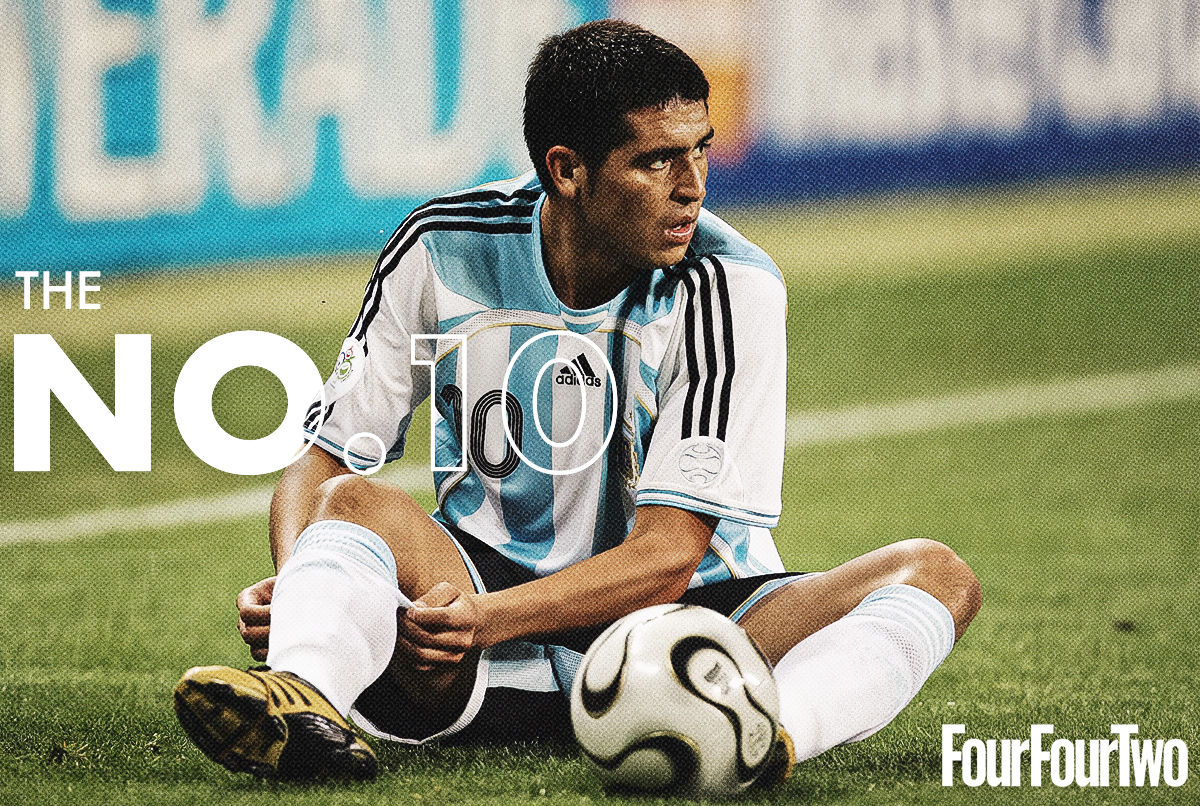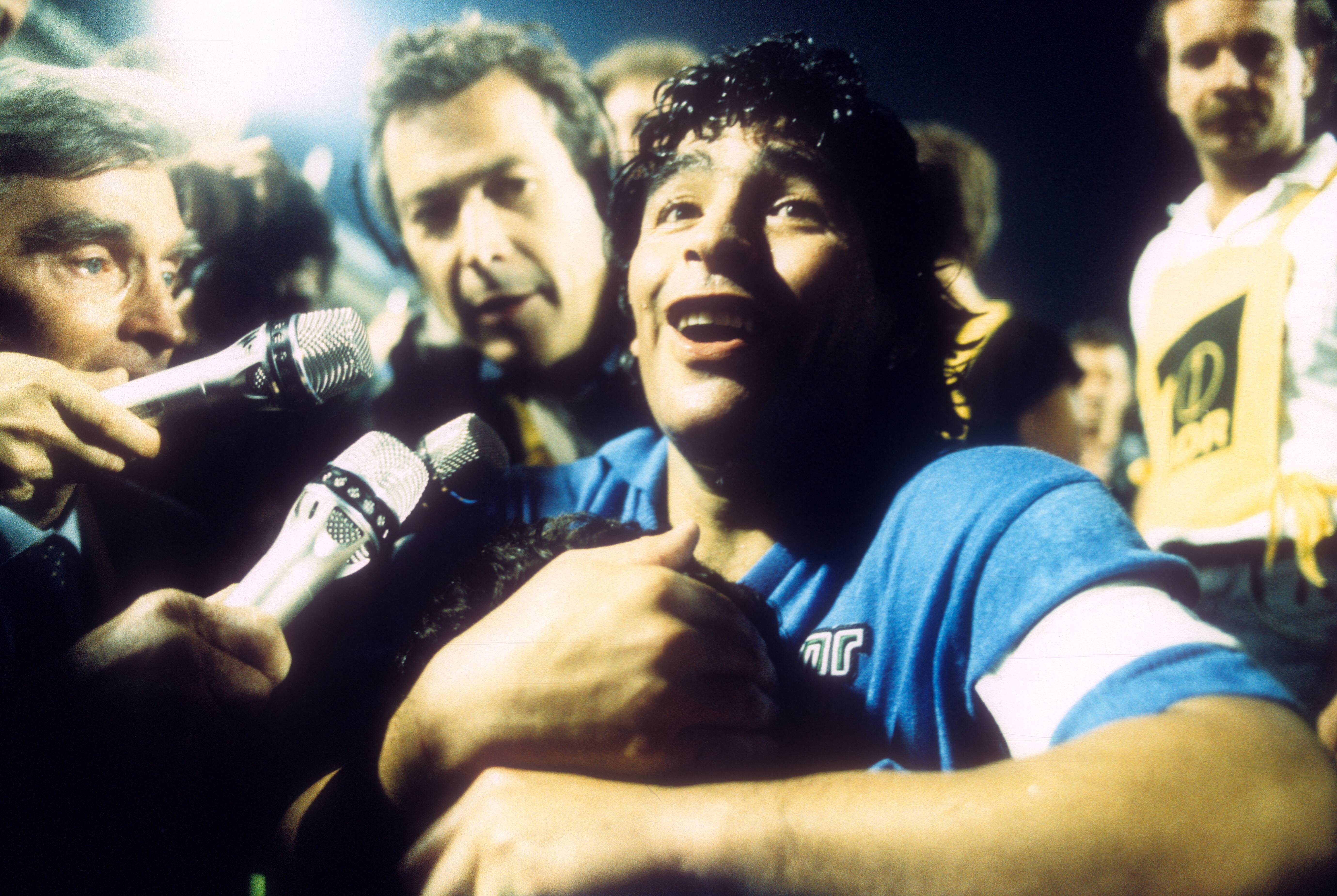
Is the No.10 football’s most iconic role? It’s hard to argue otherwise.
It's is more than a shirt number. For some, those that take on this role put the ‘beautiful’ into ‘the beautiful game’. They are a fine artist painting the perfect picture, not just another outfield slogger.
But what actually is a No.10? And are the players defined by this position something of an endangered species? Here's your tactical explainer from FourFourTwo, as we break down another football term.
What is a No.10?
In a tactical sense, the No.10 is the player connecting midfield with attack, trying to operate in the pockets of space that may appear in front of the opposition defence.
Traditionally, the shirt number would be given to the team’s most attacking midfielder. And although squad numbers these days often have very little resemblance to the position a player is deployed, the concept still exists throughout the global game.
The clip above shows the no.10 in a 4-2-3-1 formation.
The simplest way is to think of the player positionally as a hook joining attackers and the rest of the team, when in possession. This is where the Argentine term enganche comes from.
A more old-school English term of referring to the position, is playing, “in the hole”. But regardless of the name, all the players are trying to do the same thing. They are required to create as much as possible, either through dribbling or playing incisive passes through to the forwards.
The no.10 can be seen as a role and a position. A playmaker is usually deployed in the no.10 position, though not exclusively: Trent Alexander-Arnold, for example, is a playmaker but not in the no.10 position – while a defensive player could be used in the no.10 position, in a counter-pressing role marking a no.6.
Who are the great No.10s?

Only one place to start with this: arguably the player who in basically every country, other than Brazil and England, is considered the greatest to ever play the game, Diego Maradona – ranked at no.3 in FourFourTwo's list of the greatest players of all time.
Maradona was certainly the purest No.10 of all. Never has a player walked onto a pitch more capable of working between the lines than Diego, if anything he thrived on the pressure he received from opponents. The closer they got to him, the deadlier he became.
There are all kinds of players you can use in the No.10 position. A trequartista is an attacking midfielder with a free-roaming role, who plays close to the striker and has little defensive responsibility, while an enganche is thought of similar, albeit with more of a fixed position. A shadow striker is tasked primarily with attacking the box from deep, rather than creating – while a deep-lying forward is essentially a no.9 who may play closer to the no.10 position than the box, taking on more creative and link-up play. At Bayern Munich, meanwhile, Javi Martinez was successfully deployed as an ‘anti-10’, where it was the Basque's job to sit in the no.10 position but rather than create, target the no.6 and break up play higher up the pitch.
He didn’t have any defensive responsibilities and was given the freedom to roam into the positions where he could most hurt the opportunity. For Argentina and Napoli in the mid to late 1980s, giving Maradona a free role was a no-brainer, with his vision and creativity capable of winning any game instantly.
His successor at international level, the almost mythical Lionel Messi has mainly worn the no.10 jersey throughout his illustrious career, but for a large portion of this time he operated in a more advanced forward position.
Kaka, Michel Platini, Dennis Bergkamp, Juan Roman Riquelme and Mesut Ozil are all other perfect examples of great No.10s. They could all score plenty of goals but it wasn’t solely what their career was based around.
For a large portion of his Everton and Manchester United career, Wayne Rooney was closer to a No.10 than an out-and-out centre-forward. Rooney has even said on numerous occasions he didn’t consider himself a ‘natural goalscorer.’
Not bad for a player who scored 253 goals for United and who was also England’s record scorer for four years.
What are the pros and cons of playing with a traditional No.10?
Let’s start with the disadvantages. If you’re a team playing a side who are expected to have the ball more than you, and generally do more with it, playing with an old school No.10 is a risky business.
Any coach having to set up in a compact, disciplined shape, primarily to stop the opposition from playing, can’t afford to carry any passengers. Having a player who isn’t great at working backwards or in defensive transition is a luxury that few can afford at the highest level.
Mesut Ozil was a very old-school No.10, and one of the greatest of his generation. But his influence at Arsenal seemed to wane as his time at the club wore on.
When he first arrived the Gunners would dominate possession against the majority of sides in the Premier League, and play a system built around Ozil. But in his last few seasons a weaker Arsenal team, unable to dominate games and bring out the best in Ozil, saw scrutiny fall on his lack of defensive output.
But the advantage is obvious. If your wider attacking set-up ensures that your No.10 can get on the ball and affect the game, creating chances shouldn’t be a problem – and having a central attacking midfielder who can roam into the half-spaces and create overloads can bring the best out of the entire team. A good enganche will always be able to find the spare man behind an opponent's defence.
That’s why the really great ones can often win a game by themselves.







